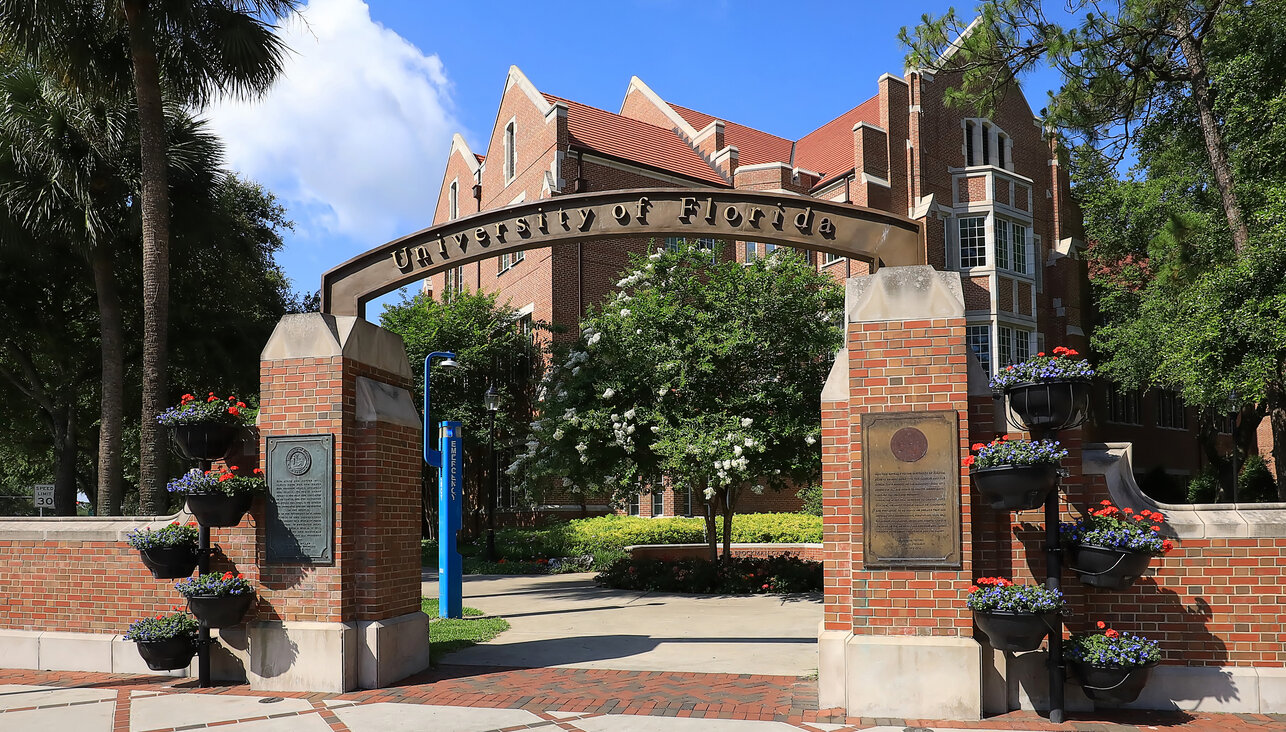Writing in Four Dimensions
Avram Davidson was a midcentury, American writer of fantastic fiction whose imagination would inherit the galaxy, and more. His stories and novels of time travel and alternate universes transcended almost everything earthly, even as their author was bound to poverty and mainstream neglect. The Encyclopedia of Science Fiction called Davidson the genre’s “most explicit literary author,” but such “explicit literacy” just meant that Davidson was far more than a writer of mere science fiction: He not only contained multitudes, he invented them. He wrote in four dimensions.
Every 14 years, Jupiter comes into conjunction with Uranus, Mercury elongates and the Pleiades undergoes an occultation — around the world, astronomers gaze at the sky. May 8 marked 14 years since Avram Davidson’s death, and it’s high time to reconsider the literary firmament; his star has faded too long. Davidson is important because he took the celestials seriously, with humility, with humor: He should be read because he attempted to shape humanity’s future by rewriting its oldest, most essential myths, all the while reminding us that no matter our technology or religion, or our religion of technology, humanity will always be human.
Born in 1923 on Hog Hill, in the predominantly kosher suburb of Yonkers, N.Y., Davidson lived a paradoxically worldly existence: He was an observant Jew, with the facial hair and Sabbath habits to prove it, but his many and outlandish writings, filling the commercialized bins of sci-fi, mystery, true crime and truer fantasy, featured characters named not Avram or its more patriarchal variant, Avraham, but Rodney Stirrup, T. Pettys Shadwell and Jack Limekiller, the lattermost a Canadian adventurer, resident of Belize, then British Honduras, which the author, native to brownstones and asphalt geography, romantically referred to as British Hidalgo.
Over the course of his 40-year career, Davidson would alchemically refashion himself: from a Yonkers hack into a sophisticate laureate whose work often surpassed that of Jorge Luis Borges or Italo Calvino (Davidson arrived at magical realism earlier than the former, or Garcia Márquez). Such a wide array of referents, sources and texts as was Davidson’s ensured the author an opposite audience: deep and wise, but never wide, except among fellow writers such as Robert Silverberg, William Gibson and Ursula K. Le Guin, all of whom revered him — as an unintentional myth, less a man to be provided for or saved from himself than a legend, or Law.
Davidson was a veteran of the Pacific Theater in World War II, serving as a medical corpsman attached to the Marines; he would later write that he wore “the only beard licensed by the First Marine Division, of which the Fifth Regiment was then a part.” Following this Chinese picaresque with its opiates and concubinage, Davidson traveled throughout Europe and the Middle East. In 1948 he served as a medic in Israel’s War of Independence, and later worked as a shepherd, instructing recently arrived pioneers, refugees from genteel Mitteleuropa, to milk their goats from the side — obliquely — to avoid sullying their pails with workaday dung. Upon his return to America, Davidson commenced with his publishing career: His stories appeared amid the pages of the obscure Jewish Life and, in 1952, Commentary, under the pseudonym A.A. Davidson.
In 1954, Davidson published, to cult success, his first fully realized popular fiction piece, “My Boyfriend’s Name Is Jello,” in the pages of a publication he would later edit — the Magazine of Fantasy and Science Fiction, which was, for decades, the bible of true science fiction fanatics. More than 200 stories would follow in the next four decades, bookended by 18 novels, all of them different, and differently strange. From that very first story to “The Spook-Box of Theobald Delafont De Brooks,” which was the last to appear in his lifetime, Davidson’s shorter work was to be found almost exclusively in slicker periodicals, whether those of science and fabulation, like Venture and Galaxy, or those of the criminous condition, such as Manhunt and Shock; in rates paid and in readership, the fate of these stories, and so of their author, would parallel the decline of these magazines, from the held-over glow of their mid-century heyday to their late and untelevised decline.
As for his novels, they, too, were published cheaply, in paperback, their covers adorned with prurient illustrations of muscular men in loincloth pelts, scatological landscapes littered with skulls and the comic wreckage of cartoony UFOs. One story, “Or All the Seas With Oysters,” relates the following inorganically biological conundrum: Safety pins are the pupae stage, and coat hangers are the larvae stage, of the development of your average household bicycle. Another, “The Sources of the Nile,” tells us that an advertising executive has discovered a clan in the Bronx whose daily activities predict future fashions and fads. In that first story, the title’s seemingly nomenclatural, dessertational reference is meant to invoke the singing, hand-clapping, haunch-slapping games of a gaggle of neighborhood children — the rightful heirs to Macbeth’s three witches, those Weird Sisters, loyal-liege-women of Hecate.
Here, these girls stand on the suburban sidewalk and sing:
My boy friend’s name is Jello,
He comes from Cincinello,
With a pimple on his nose
And three fat toes;
And that’s the way my story goes!
Soon, a man named Ajello, a boarder in the same house as the narrator, complains of swollen digits. “By tomorrow,” Davidson writes by way of sealing the curse with a heavy hand, “he will have an American Beauty of a pimple.” The nameless narrator, cured from his own mysterious ailment thanks to the propitious offering of a few loose coins (“my boyfriend will soon be healthy/he shall be very wealthy”), concludes with companionable humor: “I must ask Ajello where Cincinello is.”
Goofy, spoofy and grave, all at once: Here is a summation of Davidson’s art — the mythological mated, as if in the engendering of a freak or demon, with the around-the-block mundane. Davidson’s novels are similarly multifarious in their literary, and historical, sourcing. In 1963, after moving his growing family, thanks to shrinking finances, from New York to Amecameca, Mexico, a tiny village valleyed between the twin volcanoes of Popocatépetl and Iztaccíhuatl, Davidson wrote a flurry of them: “Mutiny in Space,” “Rork!” “The Enemy of My Enemy” and “Masters of the Maze” (all in 1965), which posits a labyrinthine wormhole that allows traffic between worlds, dimensions and times; it contains some of his best, quasi-autobiographical prose: “He grunted, abandoned the mirror, returned to the typewriter. East or west, whichever was best, Nate Gordon would never make either one (Sardinian town perched on crag, Frisian fishing village, Paris the beautiful and ever-receptive, wild Wales) (Illyrian Jonina of the false messiah, thyme-and-lilac scented Chios, Dîocletian-haunted Dalmatia) if he did not raise the essential fund.”
In the summer of 1964, Davidson’s wife, Grania, left him in Mexico, and Davidson moved on to British Honduras, then in the throes of its independence; his now ex-wife and his son, Ethan, would move there separately, before returning to California. Davidson later followed them, and lived in the same house with his family and Grania’s new husband, Stephen Davis, as a species of uncle emeritus; all would remain on cordial terms until Davidson’s late days, when his cantankerousness turned bitter, abusive. Grania, who served as Davidson’s co-author in a handful of stories, would later, if posthumously, co-edit with Silverberg “The Avram Davidson Treasury” (1998), the single greatest representation of Davidsoniana.
From the mid-1960s, Davidson dedicated himself to his magnum opus, a novel trilogy founded upon a revisionist history of the first-century BCE, following the Life & Times of the poet Virgil, whom Davidson referred to as Vergil, or Vergil Magus; it limns the Middle Ages’ legend that the immortal versifier of the Aeneid was a necromancer, a secret practitioner of the darker arts. The trilogy began with 1969’s “The Phoenix and the Mirror,” narrating Vergil’s attempt to create a major speculum, or a mirror of virginal bronze, which would alchemically act as a visual portal, revealing the whereabouts of the missing daughter of the commissioning sorceress Cornelia. The second volume, “Vergil in Averno,” followed in 1987, and the third, finished just before the author’s death, was published posthumously, as “The Scarlet Fig; or, Slowly through a Land of Stone.” Throughout the 1970s, Davidson also began, and then abandoned, another trilogy, intending to offer a comedic rewrite of the age of chivalry, knights, damsels and dragons; titled “Peregrine,” only two volumes (“Primus,” 1971, and “Secundus,” 1981) were finished. Just as the Vergil books utilize a medieval legend to frame a portrait of a Roman poet and a lost polytheistic milieu, the “Peregrine” books attempt a similar feat of intellectual and historical juxtaposition: recasting medievalism in the patina of an Enlightenment farce. Just after the completion of the first Vergil manuscript, and perhaps as an outgrowth of the trilogy’s Oriental concerns, Davidson began studying Shinto, especially one of its offshoots, Tenrikyo, a panentheist sect founded by a 19th-century Japanese noblewoman, based upon revelations that she obtained during personal visions regarding God’s incarnation as the “Oya,” or “parent,” and humanity’s need to revert to an original, almost childlike, state of creative existence. Davidson is rumored to have relinquished his yarmulke after a stay in Japan; he learned Japanese and began translating Tenrikyo texts into English.
Spiritually healthy, perhaps, the body was aging, and the finances were, as ever, sickly and wan. In 1982, Davidson relocated to Washington State, living in small and thanklessly nondescript suburbs. Ailing, in 1984 he moved into Veterans Administration housing in Bremerton, though to be able to qualify for such support he had to prove indigence, which precluded him from publishing (for profit, at least) any of his work, past or present. In the decidedly unromantic and despicable tradition of the American preterite: the fellow traveler Melville, the fraternal fabulist Poe — the final decade of Davidson’s terrene life was almost unremittingly sad. With the exception of the 1986 World Fantasy Award for Lifetime Achievement (which he would ensconce on the mantle alongside the Hugo Award, and that named after Edgar Allen, given to him by the Mystery Writers of America), Davidson lived a life of willed solitude. He broke off most contact with friends, many of whom were younger writers who had idolized Davidson since his pulp years and were astounded to read him mature into an encyclopedic fantasist of galactic importance, and, too, of worldwide neglect. A host of novels and novellas circulated posthumously amid the cenacles of Davidson’s fandom, and stories appeared well into the early 2000s, plucked from piles of manuscripts deposited with his ex-wife, and in the collections of California State and Texas A&M universities — the dispersed genizahs of the author’s diffuse imaginings.
Aesthetically always an autodidact with a filched sheepskin, or Golden Fleece, tucked under his pen-arm, Davidson’s Achilles’ heel was also his most wondrous gift from the gods: He was too many things to too many people. Once a procedural penny-a-word-man who wrote stories of detection for Ellery Queen’s Mystery Magazine, Davidson grew into a fantasist whose imagination wandered into the past right at the point at which the future became science fiction’s most fertile ground: As Philip K. Dick begat William Gibson and the so-called cyberpunk phenomenon, Davidson refused the computer age, instead digging into archaic traditions, referencing earthen tablature, desiccated papyri and all manner of apocryphal wisdom. As literary modernism became postmodernism with the thematic cooption of film and televisual culture, Davidson’s Renaissance was an attempt at “Re-nascence,” as he, in his Vergilian epic, attempted to expose a pre-Christian metaphysics that would speak to our ideally post-Christian technology in a common, if recombinant, tongue.
Though Davidson’s prose occasionally became overheated, and though his erudition often devolved from the formally abstruse to the formless obtuse, his heart was always true, and his sustained fascination with intellectual history is still, in his pages, miraculous. If his work seems sometimes too much of everything, so wild and weird, we should take succor, if not a page, from one of the few recognizable Jews in the author’s oeuvre, the kabbalist rabbi Kaplánovics: “‘Don’t blame the rat,’” he said. ‘Blame the rat-hole.’”
Joshua Cohen is a literary critic for the Forward.















